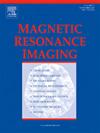基于去噪和改进参数估计的快速1mm各向同性弥散张量成像检测颞叶癫痫海马局灶性病变
IF 2
4区 医学
Q2 RADIOLOGY, NUCLEAR MEDICINE & MEDICAL IMAGING
引用次数: 0
摘要
虽然1mm各向同性的高分辨率弥散张量成像(DTI)可以检测颞叶癫痫(TLE)海马局灶性病变,但更快的采集时间将有助于潜在的临床应用。本文的目的是评估不同已发表的去噪算法,以克服低信噪比,加速人类海马在3t时的1mm各向同性DTI,同时保持弥散度度量精度和图像质量,以用于TLE的病灶检测。先前发表的5.5分钟方案,每片110张扩散图像(10个方向× 10个平均值,10 b = 0 s/mm2)被评估为1-10个平均值(相同的10个方向)的子集,这些子集使用四种算法去噪,这些算法已应用于其他扩散MRI数据集。在健康对照组中,方差稳定变换和最优奇异值操作(VST)以及非局部空间和角度匹配(NLSAM)去噪大大提高了图像质量,同时将分数各向异性(FA)或平均扩散率(MD)的虚假极值降至4个平均(即40个扩散图像和4个b = 0 s/mm2)。通过MD升高和内部微结构改变来识别局灶性病变,只有4个平均值与10个平均值的完整数据集相当。因此,对海马体1mm各向同性DTI去噪,使临床可行的3t扫描时间为2.2 min,可用于检测TLE的局灶性海马病变,以及其他神经系统疾病,如多发性硬化症、痴呆和阿尔茨海默病。本文章由计算机程序翻译,如有差异,请以英文原文为准。
Rapid 1 mm isotropic diffusion tensor imaging with denoising and improved parameter estimation for detecting focal hippocampal lesions in temporal lobe epilepsy
While high resolution diffusion tensor imaging (DTI) at 1 mm isotropic can detect focal lesions of the hippocampus in temporal lobe epilepsy (TLE), faster acquisition times would facilitate potential clinical implementation. The purpose here is to assess different published denoising algorithms to overcome the low signal-to-noise ratio and accelerate 1 mm isotropic DTI of the human hippocampus at 3 T while maintaining diffusivity metric accuracy and image quality for focal lesion detection in TLE. The previously published 5.5 min protocol of 110 diffusion images per slice (10 directions × 10 averages and 10 b = 0 s/mm2) was assessed for subsets of 1–10 averages (same 10 directions) that were denoised using four algorithms that have been applied to other diffusion MRI datasets. In healthy controls, the variance-stabilizing transformation and optimal singular-value manipulation (VST) and Non-Local Spatial and Angular Matching (NLSAM) denoising greatly improved image quality while minimizing voxels with spurious extremes of fractional anisotropy (FA) or mean diffusivity (MD) down to 4 averages (i.e. 40 diffusion images and 4 b = 0 s/mm2) in healthy controls. The identification of focal lesions indicated by elevated MD and alterations of internal micro-architecture with only 4 averages were comparable to the full data set of 10 averages. Therefore, denoising of 1 mm isotropic DTI of the hippocampus enables a clinically feasible scan time of 2.2 min at 3 T that can be used for the detection of focal hippocampal lesions in TLE, as well as other neurological disorders such as multiple sclerosis, dementia and Alzheimer's disease.
求助全文
通过发布文献求助,成功后即可免费获取论文全文。
去求助
来源期刊

Magnetic resonance imaging
医学-核医学
CiteScore
4.70
自引率
4.00%
发文量
194
审稿时长
83 days
期刊介绍:
Magnetic Resonance Imaging (MRI) is the first international multidisciplinary journal encompassing physical, life, and clinical science investigations as they relate to the development and use of magnetic resonance imaging. MRI is dedicated to both basic research, technological innovation and applications, providing a single forum for communication among radiologists, physicists, chemists, biochemists, biologists, engineers, internists, pathologists, physiologists, computer scientists, and mathematicians.
 求助内容:
求助内容: 应助结果提醒方式:
应助结果提醒方式:


